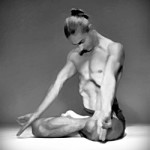Mula Bandha Definition The name can be translated from Sanskrit as the root lock, since mula (or moola) means ‘root’, and bandha – ‘lock’. This is an external meaning. The […]

In Sanskrit word ‘Bandha’ means “knot”, “lock” or “fastening”; it comes from a verb root with the meaning ‘to hold’, ‘to tighten’ or ‘to lock up’. In yoga those techniques described with the term ‘Bandha’, engage particular muscles to “lock up” certain areas in the body to achieve a desired effect. The muscles are contracted and being hold in that condition for some time, which produces interesting outcomes, such as an ability to control various bodily organs and systems.
Traditionally Bandhas considered to be a part of Mudras, and often incorporated in Pranayamas.
Bandhas massage, stimulate and grant control over organs, muscles, nerves and physical processes within our body. Controlled contractions and muscle tension influence the subtle, pranic body, which leads to the correction and redirection of the flow of Prana. This, in turn, affects our mind, and gives us ability to achieve peace and satisfaction, and even fight diseases at their root (they start at a subtle level, and then reach the physical one).
There are four Bandhas: Mula, Jalandhara, Uddiyana, and Maha bandha. The Maha bandha is the combination of the first three. While Bandhas are physical actions, they have a strong effect on pranic body, though the influence on the three Granthis or psychic knots.
The traditional yoga texts describe three major Granthis (‘Granthi’ in Sanskrit also means ‘knot’): Brahma, Vishnu and Rudra Granthi. They represent psychic knots, and prevent Prana from flowing freely through the main energy channel in our body – Sushumna nadi, which, in turn, impedes the awakening of the chakras and the rising of Kundalini.
How Bandhas associate with Granthis:
Moola – Brahma Granthi
Uddiyana – Vishnu Granthi
Jalandhara – Rudra Granthi
Brahma Granthi is located in pelvic area, and associated with Muladhara and Svadhisthana charka. Vishnu Granthi is in the heart (linked to Manipura and Anahata Chakra). Rudra Granthi – the center of the head (and linked to Vishuddhi and Ajna chakra). It should be noted that these are not at the physical level, but at the subtle one, nevertheless the Bandhas are able to influence them, since our physical and subtle bodies are interconnected.

Mula Bandha Definition The name can be translated from Sanskrit as the root lock, since mula (or moola) means ‘root’, and bandha – ‘lock’. This is an external meaning. The […]

I assume that by the term “Ashtanga yoga” we mean Ashtanga-vinyasa-yoga as taught in the school of Pattabhi Jois. While the bandhas are same in all the yoga traditions and […]